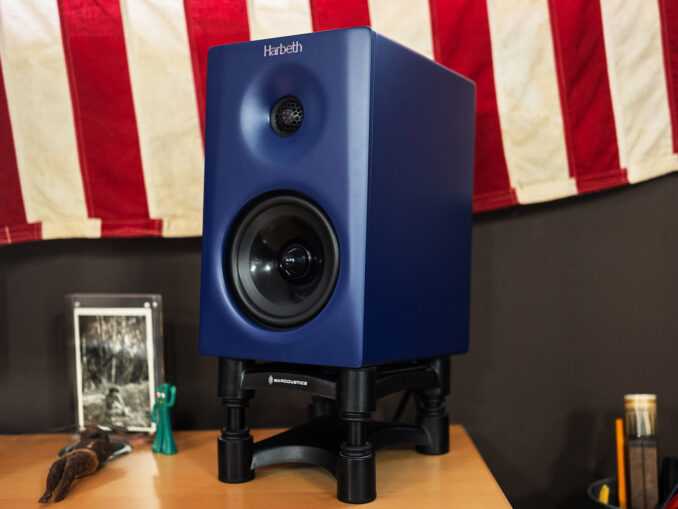
TMI. Too much information is an oft-stated knock against “Pro” audio gear. On the other hand, hifi companies with Pro Audio history are often valued for that experience. Odd, no?
Me? I don’t really understand the issue as it relates to home audio seeing as our job is to listen for pleasure where I want all the information I can get as long as it doesn’t sound shitty. A noble endeavor indeed and one that obviously finds joy in all manner of approaches when it comes to the gear we choose to live with. Visit any hifi show if you need proof.
I’ve been living with the ADAM A3X on my desktop, a “nearfield monitor” from a Pro Audio company, going on 13 lucky years. The A3X are a 2-way powered speaker with a 4.5” Carbon Fiber Woofer and X-ART tweeter (eXtended Accelerating Ribbon Technology), the latter based on the 1960’s invention of the Air Motion Transformer by Oskar Heil. Each driver is powered by a 25W Class A/B amp and the A3X sit on the indispensable ISO stands from ISOAcoustics. Indispensable because they improve the performance of whatever speaker sits on them.
I mention these details because I don’t hear anything particularly “Pro” about their sound and also because that’s the environment the Harbeth NLE-1 (New Listening Experience) were dropped into when they arrived back in June.
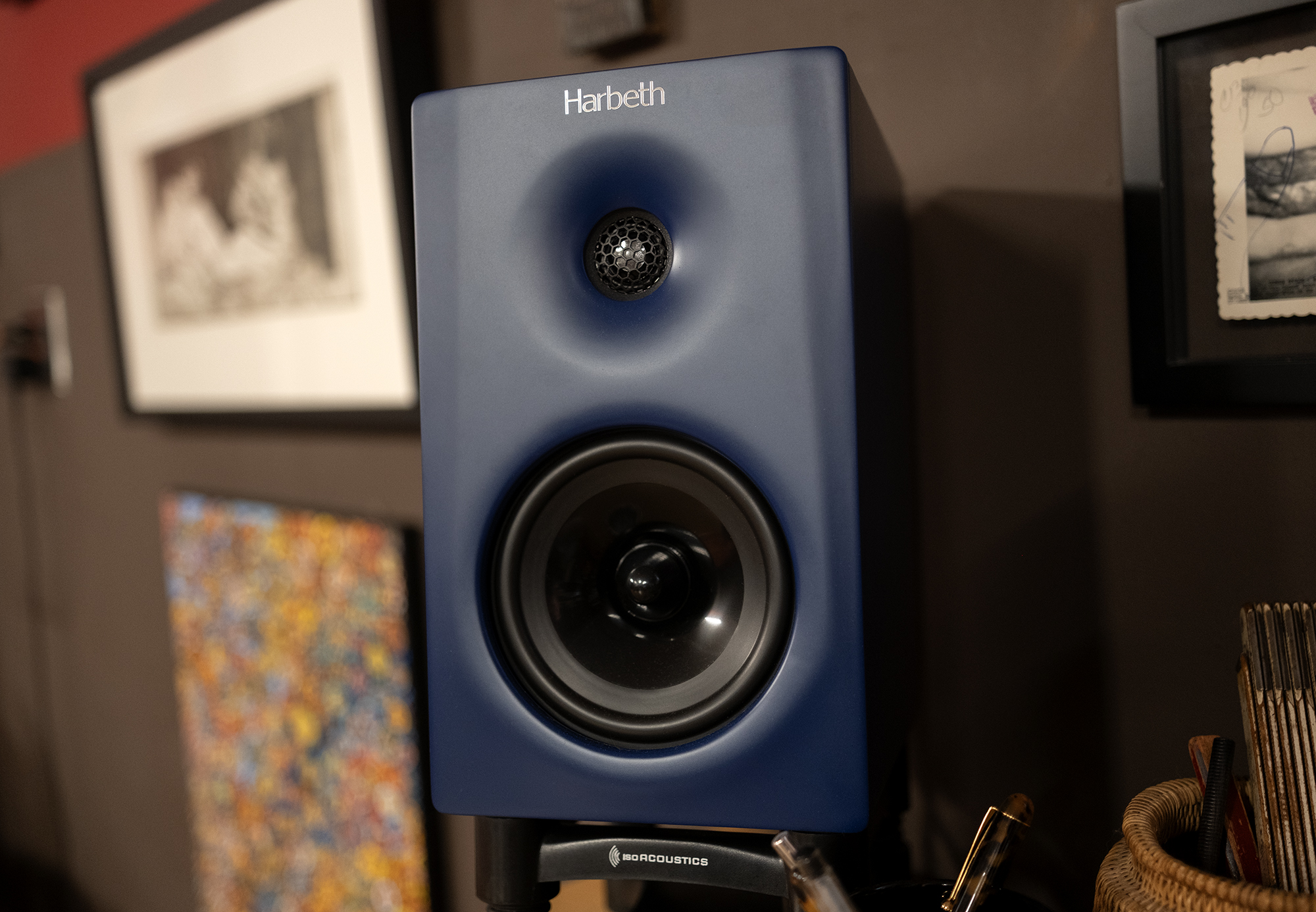
Harbeth has a near 50-year storied history building monitors/speakers, reaching back into the BBC’s Research Department where H.D. Harwood developed the first polypropylene-coned bass-midrange woofer. The company was founded by Harwood in 1977 when it debuted the HL Monitor (Mk1). Alan Shaw took over the company in 1986 as owner and designer. All to say Harbeth has deep roots in “Professional” and consumer audio.
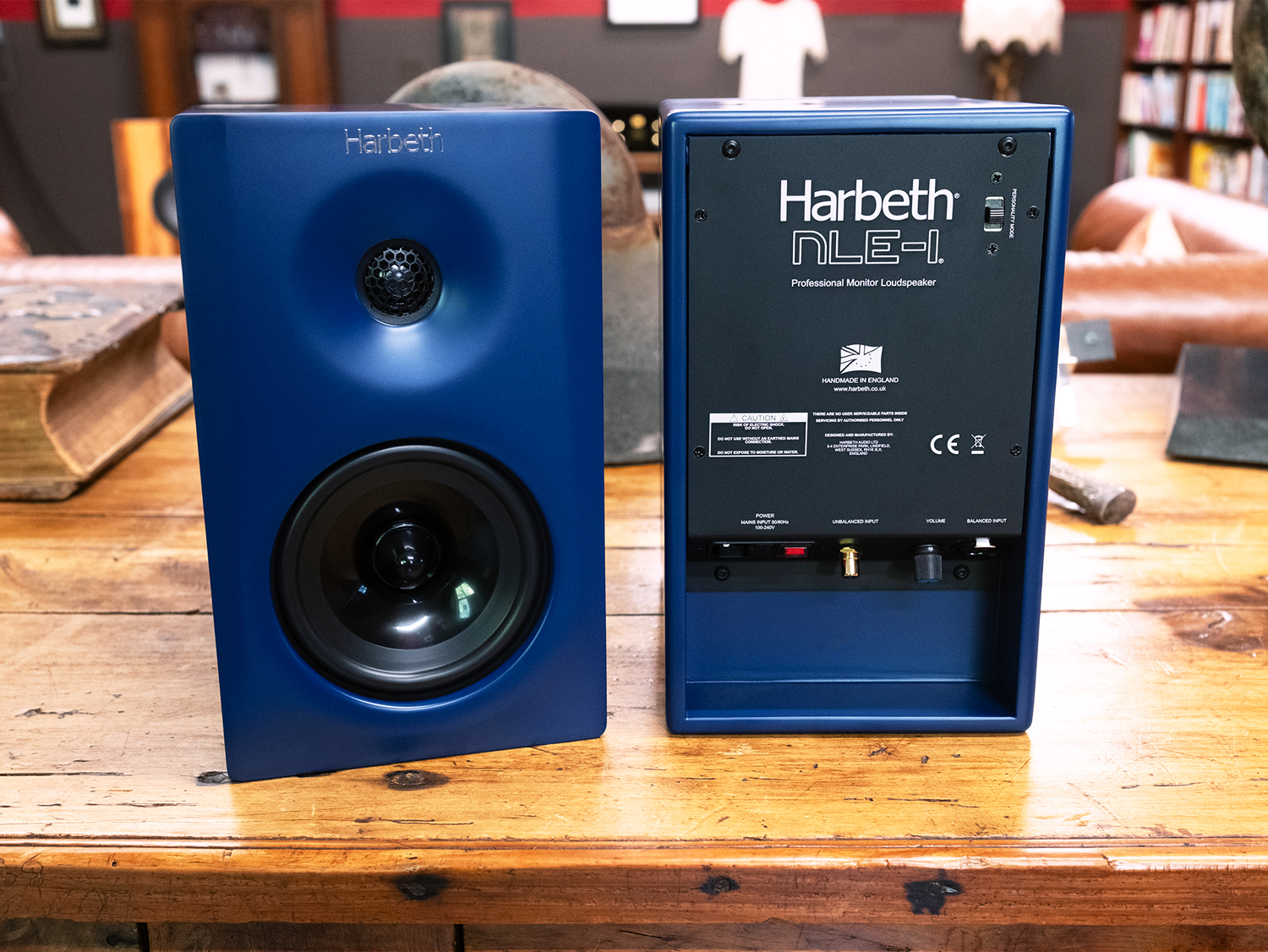
The NLE-1 Professional Monitor Loudspeaker, it says so on the back, are a powered 2-way speaker built around Harbeth’s 110mm (4.33”) RADIAL drive unit for mid/bass paired with a 19mm (3/4”) ferrofluid-cooled tweeter. The powered part comes courtesy of two 50 Watt ultra-low-distortion, high damping factor Class-D amplifiers per side, one for each driver which are controlled by internal DSP crossovers.
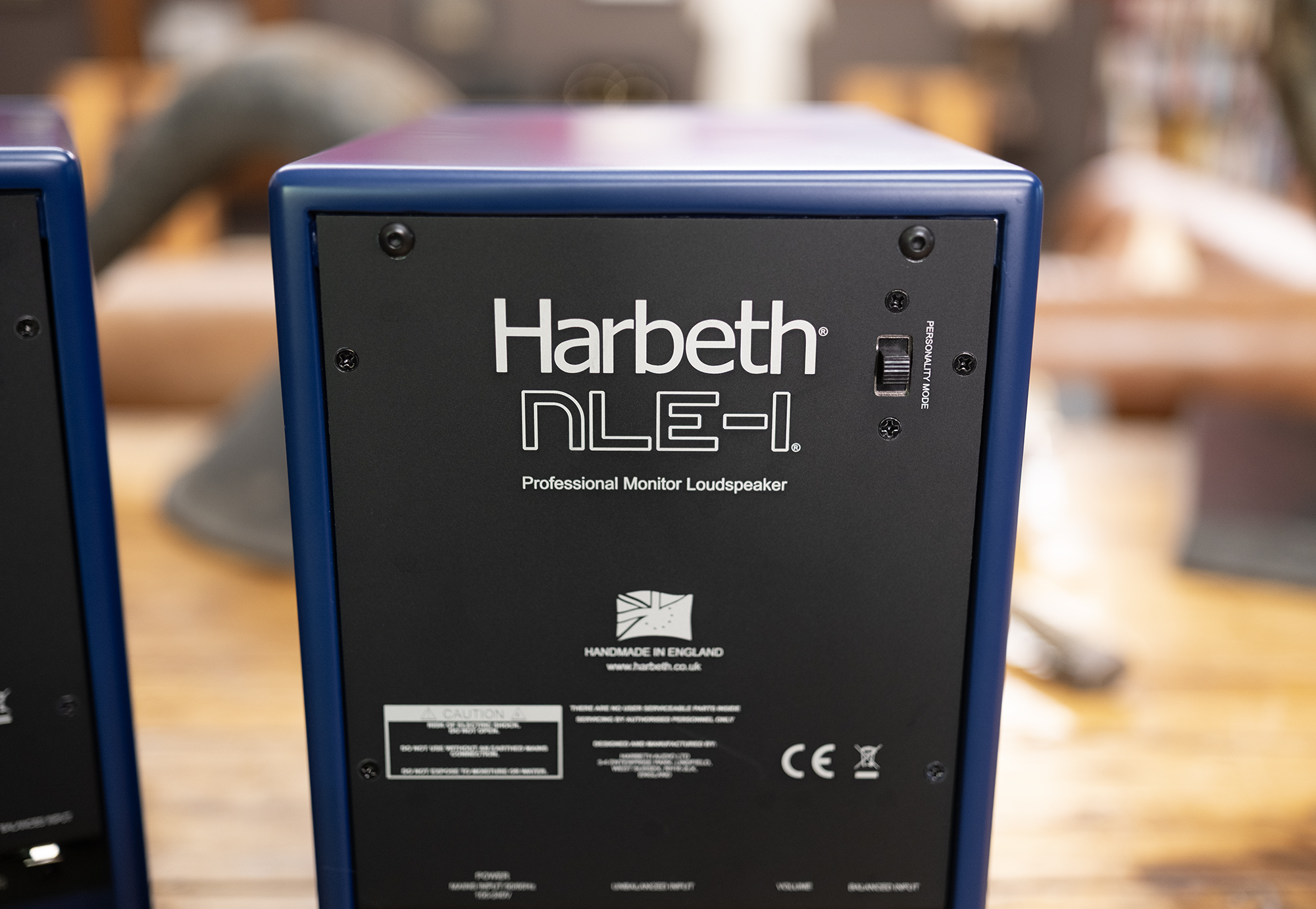
DSP is also used in the Personality Mode 3-position switch found around back that offers three options—(from the top) Default mode, Bass extension mode, and Near-wall/desktop mode.
From the NLE-1 manual on the Personality Mode:
A) Default mode: the speaker has a similar tonal balance to other small, closed- box speakers such as the P3ESR. We consider this mode to be optimised for normal listening with the speakers in a normal room position, i.e. away from the walls.
B) Extended bass: with the personality switch in the middle, deeper bass output will be generated and the speaker will sound larger than it really is. Again this mode is intended for use with speakers placed away from the rear walls. Note: the maximum loudness of the system will be reduced in this mode.
C) Near-wall/Desktop: in this position the speaker response is slightly reduced in the lower mid-range and bass regions to compensate for the boost given to these frequencies when speakers are placed against walls.
In practice, as with speaker placement, the best switch position will depend on your room, musical tastes and personal preferences – please experiment to find which option sounds best for you.
In practice I preferred Default mode as the Near-wall/Desktop mode made music sound a bit closed in and kinda unexciting according to my taste. If you’re getting nervous about placing personal preference above DSP-based optimization don’t fret—the best solution is always all in your head.
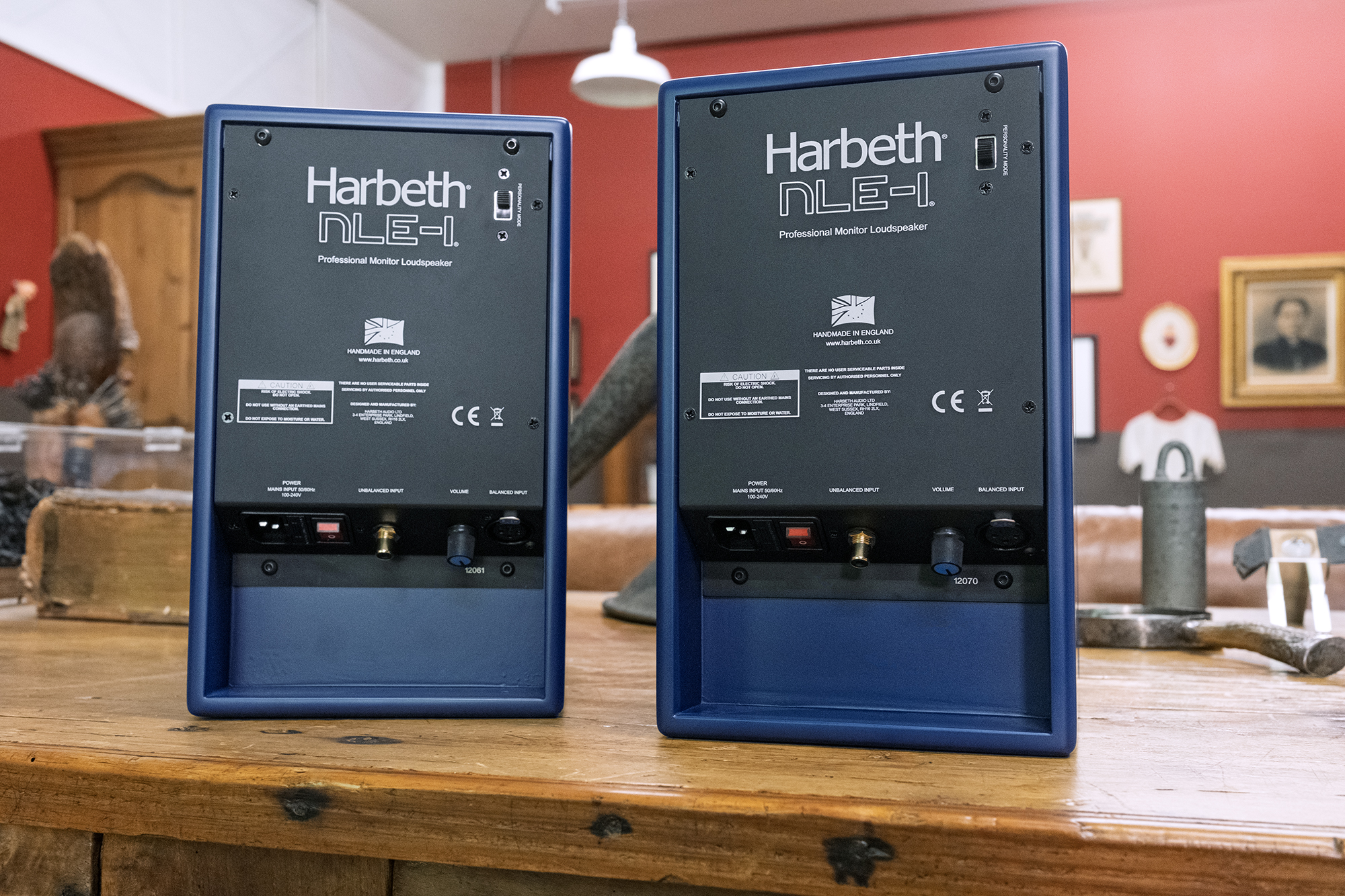
Also around back we find a recessed cavity in each speaker containing a single-ended RCA input, a balanced XLR input, a volume control knob, power button, and IEC inlet.
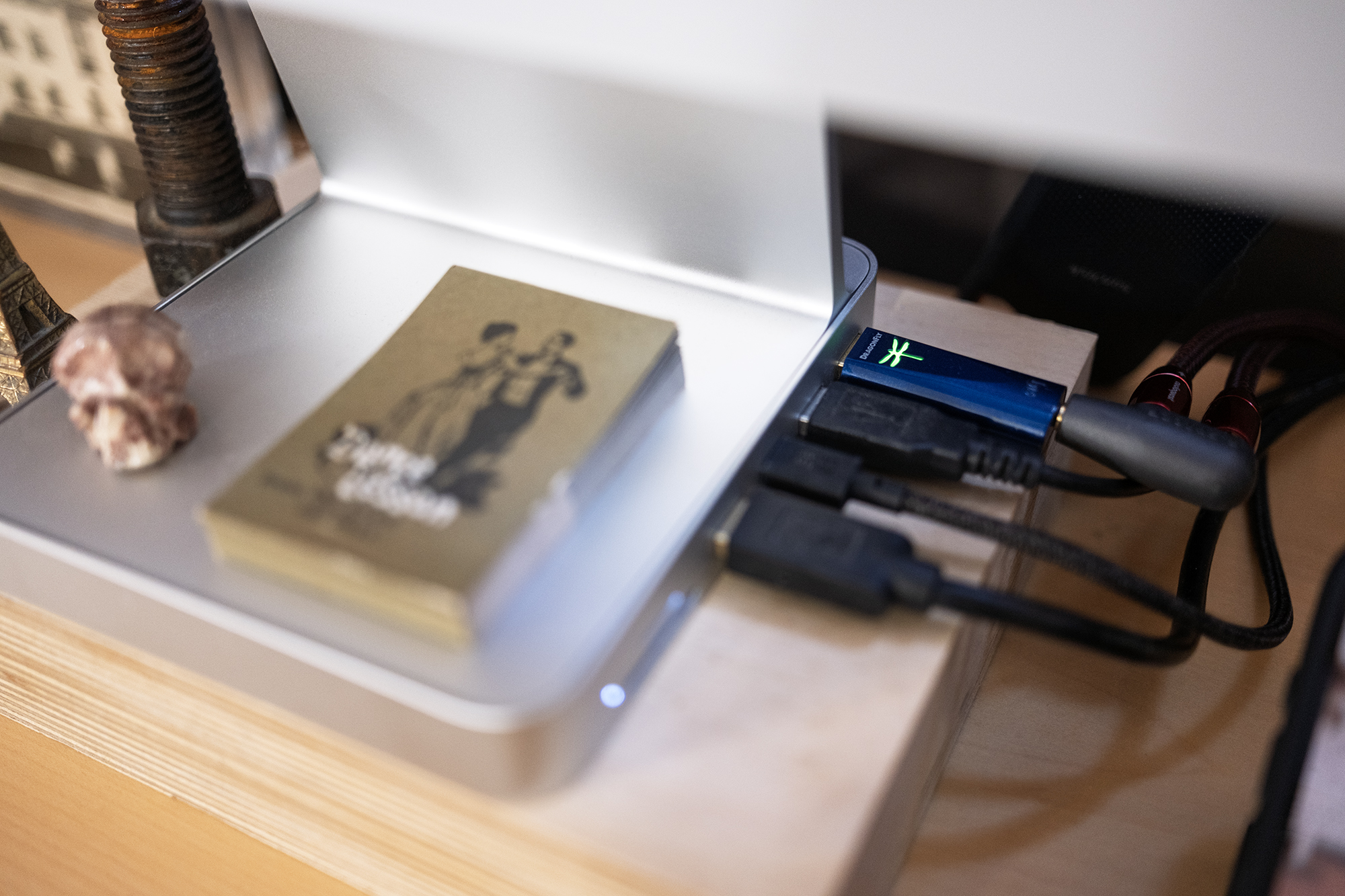
On my desktop, an AudioQuest DragonFly Cobalt DAC takes in the digital out from my iMac and sends out an analog signal to the speakers in play via AQ Red River interconnects while Roon controls the show. Seeing as those volume control knobs on the NLE-1 became basically inaccessible once they were in place, I left ‘em wide open and used the DragonFly’s volume control via Roon. The NLE-1 manual recommends using your source for volume and using these speaker-based controls to adjust left/right balanced where needed. It’s worth noting that when using the XLR inputs, the RCA inputs can be used as outputs to connect to Harbeth’s Nelson bass extender/stands for those in need of more bottom end when using the NLE-1 in room, i.e. not on a desktop.
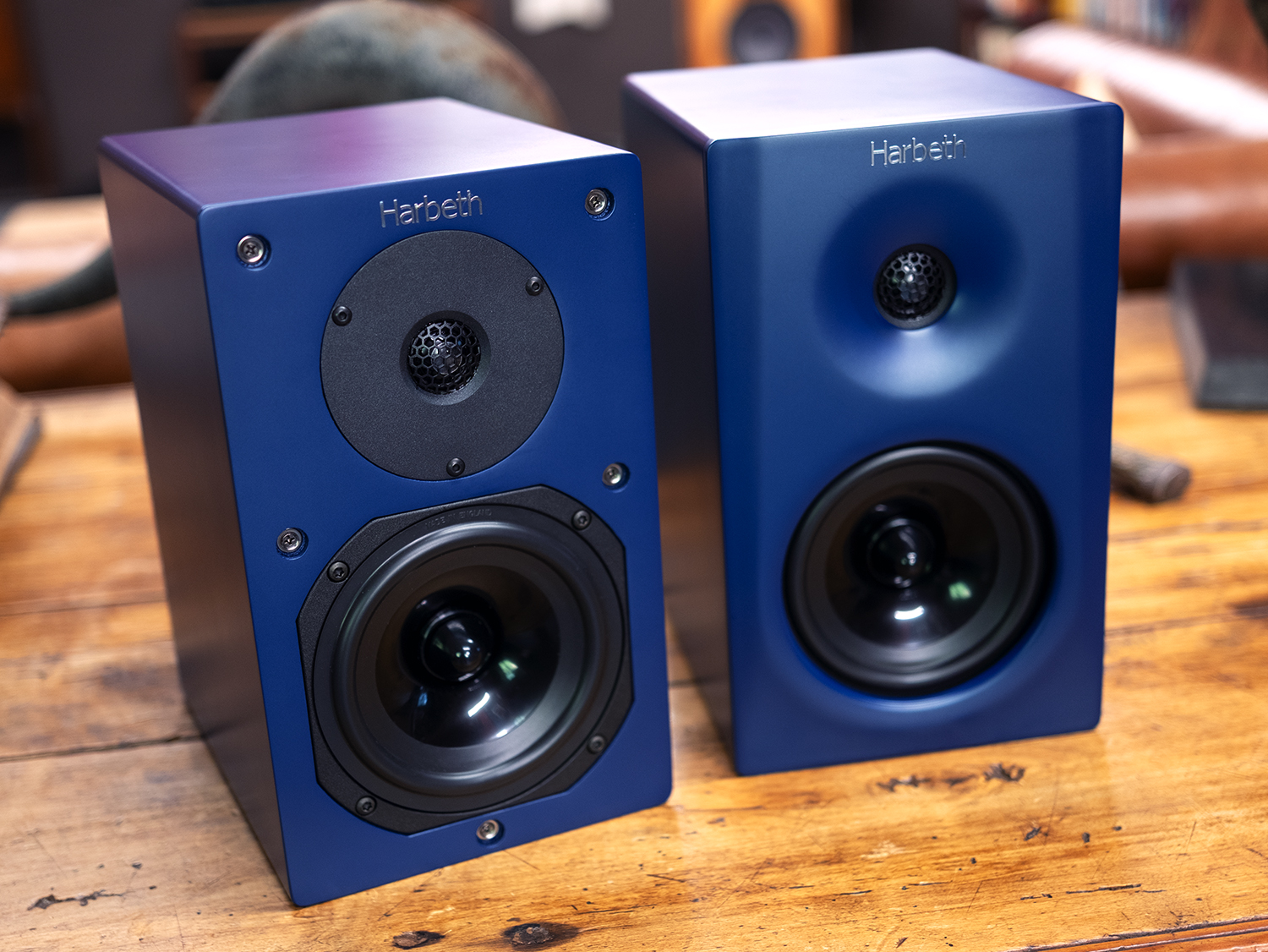
The detachable front plates are meant to remain in place as they offer more than a pretty face, one example being the tweeter’s waveguide which offers a number of sonic benefits.
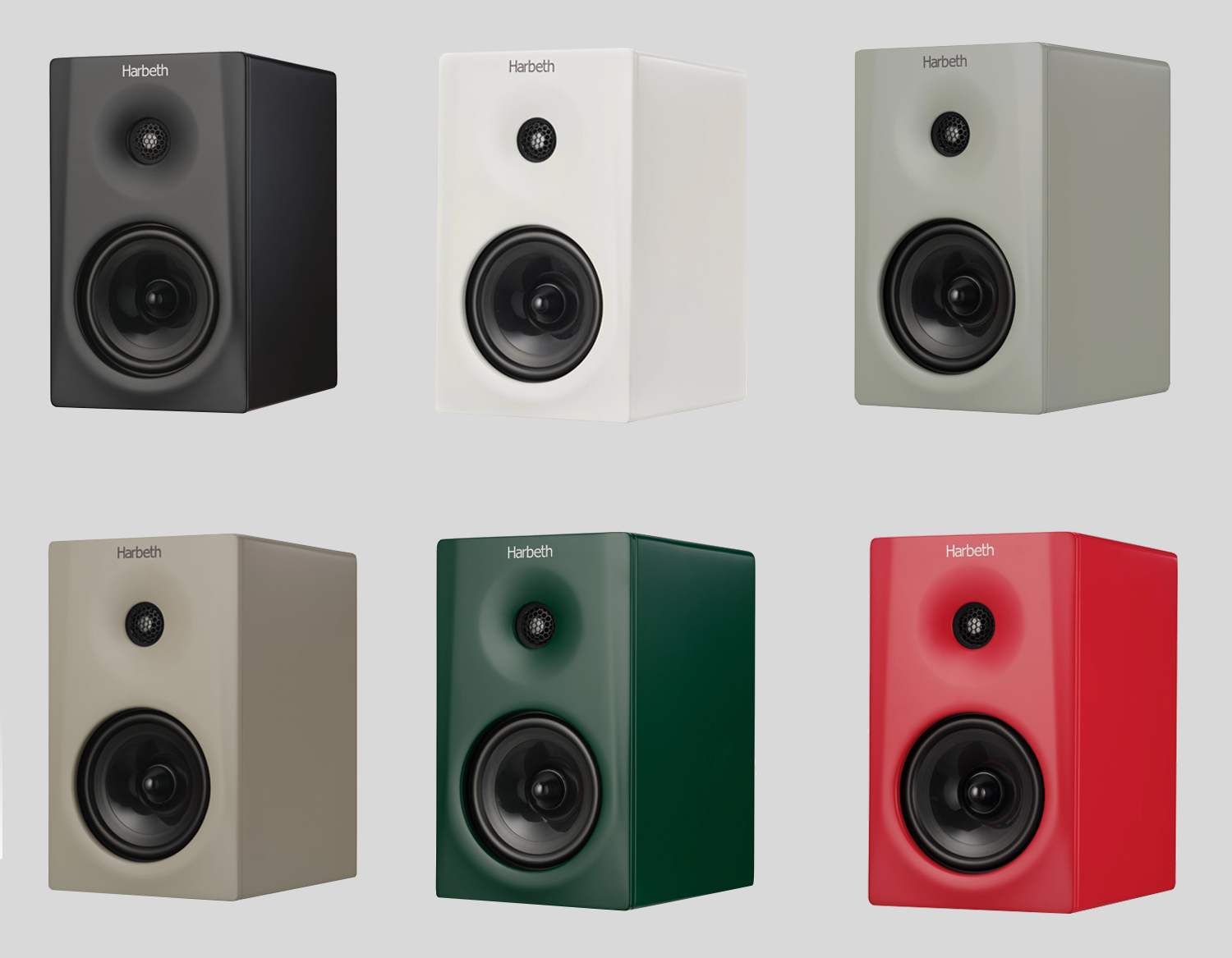
And they come in colors! including the Midnight Blue of the review pair which I enjoyed living with as they brightened things up, adding a bit more color to the colorful Barn. The NLE-1 are also very solid and weigh in at a stout 16.75 lbs.
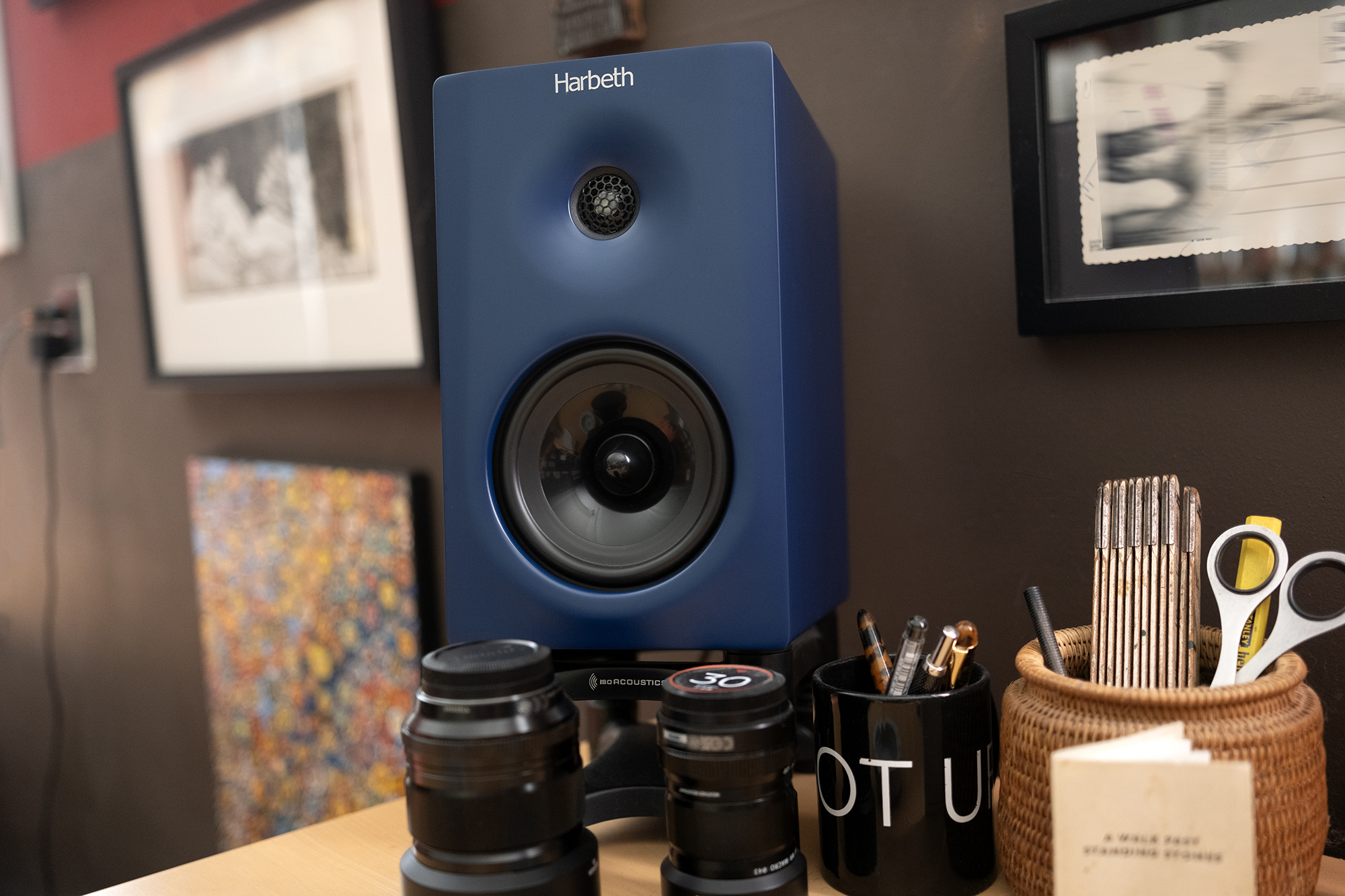
The Harbeths ended up just about where I keep the ADAMs, which is a few inches further than an arm’s length away. About as nearfield as it gets and after only a few moments of play it was obvious the NLE-1 sounded bigger than the A3X in every way. So much so, I actually double checked the woofer sizes because I was nearly certain the NLE-1s were bigger. As you read earlier on, they’re not bigger in size but they are in sound.
I’ve been easing into Emily Wells This World Is Too _____ For You, an album inspired by artist Ugo Rondinone’s Seven Magic Mountains, a public art installation located near Jean Dry Lake and Interstate 15, approximately ten miles south of Las Vegas, Nevada. I will also note that Wells is scheduled to perform at the Metropolitan Museum of Art in January, 2026 as part of an installation titled “In The Glass Age” by conceptual artist Alex Da Corte with Wells providing live musical accompaniment honoring the work of Marcel Duchamp. If you don’t know, I am fan of Duchamp’s work more than his influence on the art that came after. His shadow still looms large.
Here, on This World Is Too _____ For You Wells enlists the help of the Metropolis Chamber Ensemble who add violin, viola, cello, double bass, and french horn to Wells on synths, vocoders, drum programming, electric guitar, vocals, live drums and violin. As you might imagine, this is lovely music if you love the sound of real things and the Harbeth recreated a stirring rendition on my desktop that had me leaning in for even more in-my-head goodness. I am a fan of nearfield listening and do it most days, something I rarely talk about, when I’m typing or reading or looking at things on the screen.
I also do a fair amount of new music exploration here as well so I rely on my desktop system to get out of the way so that music gets into my head in as pure a form as possible. And this is one area where the Harbeth NLE-1 excel as they offer crystal clear sound that feels nearly untouched by the technology that makes them tick. The Harbeth’s also have a very nice physicality without overwhelming, a nice balance of force and delicacy.
We Can’t Be That Far From The Beginning was the inaugural release on Tom Halstead and Joe Andrews RR label who you might know as Raime. This 12” EP offers a heavy helping of Raime’s astoundingly rich sonic palette and I do mean heavy. Layers over layers over layers of acoustic sounds, electronics, voice, and vocals explode in space creating a vast sound world to explore and the Harbeth’s projected a much larger than my desktop sound image that was rich in detail down into the depths of every creek and cranny while projecting the whole as a sonic force with real life dynamics and plenty of grunt and growl. Damn near cinematic in scale and impact. Nice.
The NLE-1 have a claimed frequency response of 75Hz – 20kHz, ±3dB in free-space according to Harbeth, which translated into enough for my tastes in the nearfield even with bass heavy music like the Tricky produced and tasty Lonely Guest thanks in part to their near-wall placement and the bass reinforcement that brings to the table (or desktop). Then again, I never crave more bass in my day-to-day listening, the ADAM A3X are rated at 60Hz – 50kHz, so people who like a deeper reach might want to add some reinforcement by way of an external subwoofer, which can be tricky with a desktop-based system where placement and real estate are real concerns.
Returning to the ADAM A3X, using this same music as comparator, was a bit of a let down as the scale and impact diminished by a not so subtle degree. While I love the ADAMs for everything they do well which includes an uncanny presence thanks to that X-ART ribbon tweeter that places sounds inside your head with a directness that’s hard to beat, there’s no denying that the Harbeth’s combined strengths of physicality and superb clarity made for a more moving experience. Sigh.
It’s worth noting that the ADAM A3X are long out of production and back when I reviewed then bought them, c. 2012, they cost $350 each, about $500/each in today’s dollars so hardly a fair comparison price-wise.
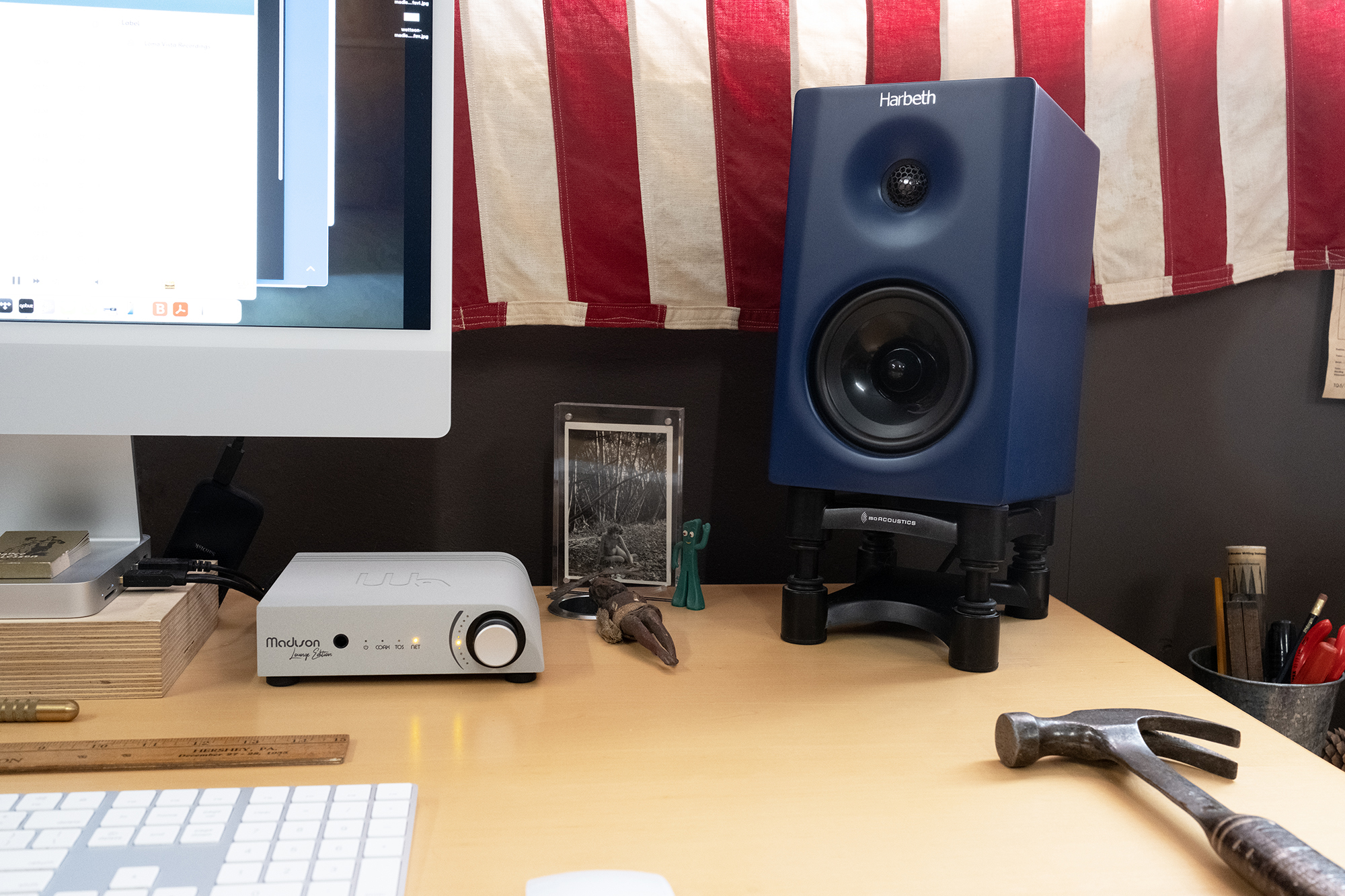
In addition to the DragonFly Cobalt DAC, I also paired the Harbeths with the recently reviewed Wattson Madison LE streaming DAC (review), since I had it on hand, and the Wattson offered a nice upgrade to the overall system sound most notably in terms of transparency where the things responsible for making the sounds of music sounded more fully realized. I mention this because it’s worth keeping in mind that a better front end will come through the Harbeths loud and clear, something I view as another aspect of their superb clarity.
Annahstasia’s debut LP Tether, released on Brooklyn’s drink sum wtr back in June, should come with a box of Kleenex. A simple folk-inspired soulful record, Annahstasia’s husky voice is about as touching as a human voice gets, here accompanied by herself on acoustic guitar with more and less subtle help from drums, bass, brass, strings, backing vocals, piano and more, I leaned in just enough so the Harbeths were firing right into my ears, closed my eyes, and felt as one with this soulful touching music.
From the liner notes:
Artistic resilience, gratitude, and dedication to process have yielded Tether, Annahstasia’s full-length debut on art-forward indie label drink sum wtr, a collection of beaming torch songs, orchestral hymns, and astral anthems that feel lived-in, drawn from the human experience and the spectrum of love.
Uplifting to the point of soaring, this experience was about as delightful as it gets with the NLE-1s acting as a perfect interpreter, translating recorded sound into pure music energy. Delicacy, refinement, touch, and presence pitched perfectly into my head and heart. Bravo.
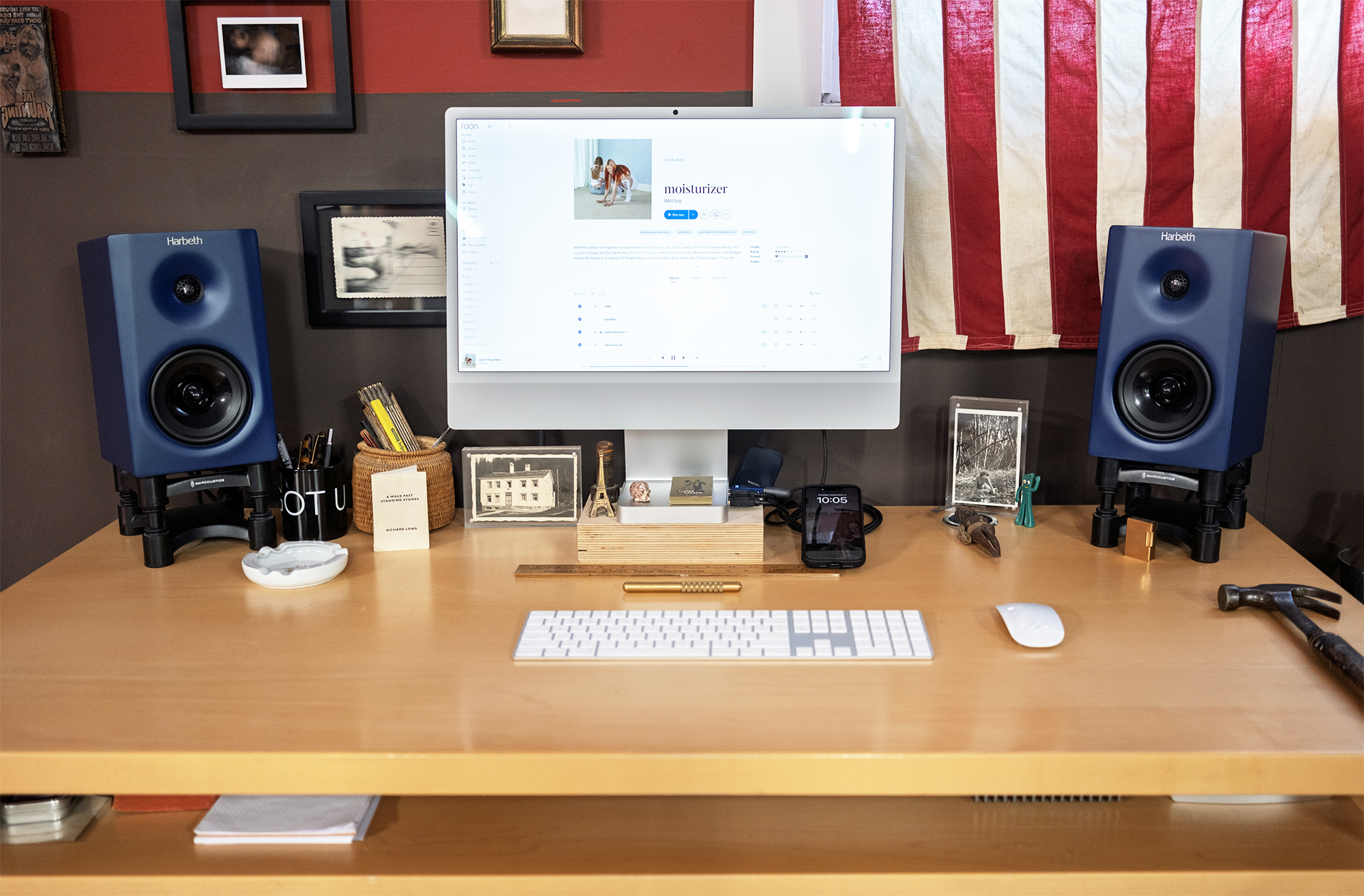
I have no idea how many hours, in total, I listened to the NLE-1s during their 2-month+ Barn stay, nor how much music played through them but seeing as I typically spend 6 days in the Barn and a lot of time at my desk with music always playing, it’s safe to say, a lot. A lot of time listening to music to discover the new and revel in the familiar. As time goes on, I find discovery much more exciting as compared to replaying old favorites which seems to come with too much nostalgia these days, clouding over the experience in-the-moment.
When I listen to music on the hifi, I want to be as completely in-the-moment as possible and the quality of reproduction allows that to happen more easily and for more extended periods of time the more engaging it is. The Harbeth NLE-1 delivered this kind of seamless entry into the moment of all the music I asked them to play by offering a wonderful combination of physicality and refinement that made every musical moment magical.
Harbeth NLE-1 High-Performance Digital Loudspeaker
Price: $3790/pair
Company Website: Harbeth
US Distributor Website: Harmonia Distribution
Specifications
Description: NLE-1 digital loudspeaker
Drive Units: 110mm Harbeth-made RADIAL drive unit, 19mm ferrofluid-cooled tweeter
Frequency range: 75Hz – 20kHz, ±3dB free-space
Inputs: XLR and RCA
Power Consumption (idle): 60mW
Power Consumption (max): 50W
Dimensions (H x W x D): 275mm x 166mm x 230mm
Finishes: Satin Black, Satin Whit, Titanium Grey, Ivory Sand, Midnight Blue, Racing Green, Crimson Red
*Not all finishes are available in all countries.
